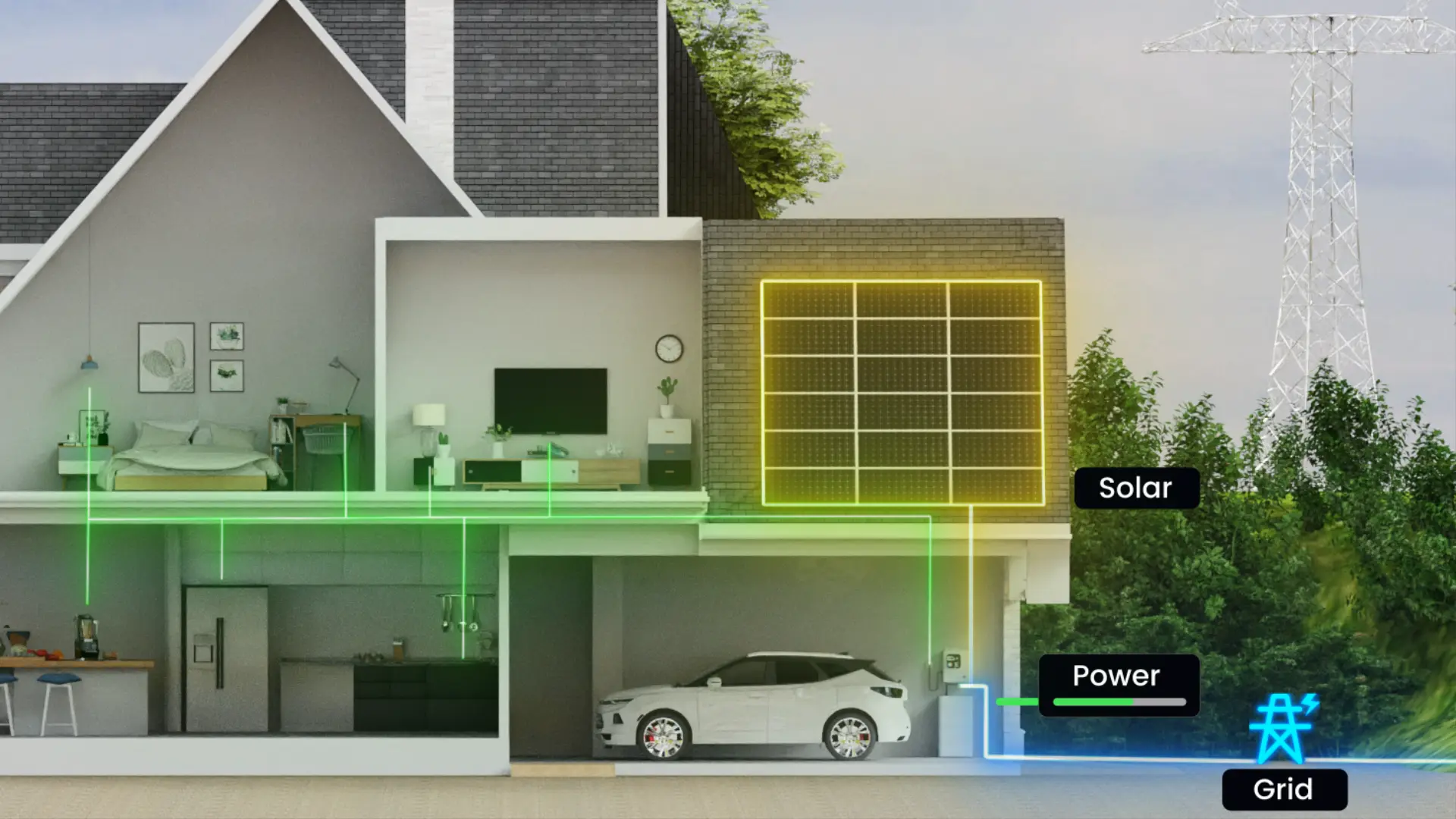À medida que a procura global de energias renováveis continua a crescer, a tecnologia de armazenamento de energia solar registou progressos notáveis nos últimos anos. Em setembro de 2024, registaram-se numerosos avanços neste domínio, melhorando a eficiência da utilização da energia solar e lançando as bases para futuras soluções energéticas sustentáveis. Este artigo fornece uma análise abrangente dos mais recentes desenvolvimentos na tecnologia de armazenamento de energia solar, abrangendo a dinâmica do mercado, os avanços tecnológicos, as inovações na integração de sistemas, as tendências futuras, os desafios e as oportunidades.

Conceitos básicos da tecnologia de armazenamento de energia solar
Definição e papel do armazenamento de energia solar
A tecnologia de armazenamento de energia solar converte a energia solar em eletricidade e armazena-a para utilização posterior. Este processo envolve normalmente painéis solares que convertem a luz solar em eletricidade, que é depois armazenada em dispositivos de armazenamento de energia (por exemplo, baterias). Os sistemas de armazenamento de energia solar fornecem um fornecimento constante de eletricidade a casas, empresas e à rede eléctrica, mesmo quando a luz solar é insuficiente ou durante a noite.
Como funciona o armazenamento de energia solar
Os componentes principais de um sistema de armazenamento de energia solar incluem painéis solares e baterias de armazenamento. Os painéis solares convertem a luz solar em corrente contínua (CC), que é depois convertida em corrente alternada (CA) por um inversor para utilização diária. O excesso de energia é armazenado em baterias para utilização quando a luz solar não está disponível.
Visão geral do mercado de armazenamento de energia solar, 2024
Dimensão do mercado global de armazenamento de energia solar
O mercado global de armazenamento de energia solar tem registado um rápido crescimento, com as projecções para 2024 a preverem uma taxa de crescimento anual composta (CAGR) superior a 15%. Esta expansão é impulsionada pelo apoio das políticas governamentais e pelos contínuos avanços tecnológicos.
Principais intervenientes no mercado e tecnologias
Entre os principais intervenientes no mercado contam-se a Tesla, a LG Chem e a Panasonic, que possuem uma vasta experiência em tecnologia de baterias de lítio. Além disso, as empresas emergentes estão a explorar novas tecnologias, como as baterias de estado sólido e as baterias de iões de sódio, para melhorar a eficiência do armazenamento de energia e reduzir os custos.
Principais dinâmicas do mercado regional
- América do Norte: A Califórnia e o Texas são os principais mercados para o armazenamento de energia solar, impulsionados por incentivos políticos.
- Europa: O Green New Deal da UE aumentou o investimento em energias limpas, impulsionando o mercado do armazenamento de energia solar.
- Ásia: Países como a China e a Índia estão a expandir rapidamente a sua capacidade solar e as suas instalações de armazenamento, apoiados por políticas governamentais e por uma forte procura no mercado.
Últimos avanços na tecnologia de armazenamento de energia solar
Avanços na tecnologia de baterias de estado sólido
- Princípio das pilhas de estado sólido: As baterias de estado sólido utilizam electrólitos sólidos em vez de líquidos, melhorando a segurança e aumentando significativamente a densidade energética.
- 2024 Inovações: Os cientistas fizeram progressos significativos na seleção de materiais e na conceção de interfaces electrolíticas, acelerando a comercialização de baterias de estado sólido e melhorando a eficiência do armazenamento de energia solar.
Desenvolvimento de baterias sem electrólitos
- Vantagens: As baterias sem electrólitos proporcionam maior segurança e uma vida útil mais longa.
- 2024 Inovações: Novos materiais desenvolvidos para baterias sem electrólitos em 2024 aumentaram a densidade energética e prolongaram a vida útil, tornando os sistemas de armazenamento de energia solar mais eficientes e fiáveis.
Nanotecnologia no armazenamento de energia solar
- Papel dos nanomateriais: A nanotecnologia melhorou significativamente a condutividade e a densidade energética das pilhas, reduzindo a utilização de materiais e diminuindo os custos.
- Desenvolvimentos 2024: Os investigadores desenvolveram nanocompósitos à base de grafeno para eléctrodos de baterias, melhorando a velocidade de carga/descarga e prolongando a vida útil das baterias, marcando uma nova era no armazenamento de energia solar.
Inovação na integração de sistemas de armazenamento de energia
Integração de sistemas de energia solar e de armazenamento
- Vantagens dos sistemas integrados: A integração da energia solar com sistemas de armazenamento melhora a gestão da energia e a eficiência da distribuição, aumentando a fiabilidade global do sistema.
- Inovações 2024: Tecnologias como os sistemas de gestão de energia distribuída (DEMS) e as micro-redes tornaram a integração do armazenamento de energia solar mais eficiente e flexível, ajudando as casas e as empresas a otimizar a utilização dos recursos solares e a reduzir a dependência da rede.
Inteligência Artificial (IA) e Grandes Dados no Armazenamento de Energia
- Papel da IA: A IA e o big data analisam e prevêem padrões de utilização de energia, optimizando os processos de carga e descarga da bateria para maximizar a vida útil da bateria e a eficiência do sistema.
- 2024 Aplicações: Os avanços da IA na previsão da produção de energia solar e da procura de eletricidade permitiram que os sistemas de armazenamento de energia solar gerissem melhor a procura e a utilização de energia.
Tendências futuras na tecnologia de armazenamento de energia solar
Sustentabilidade e impacto ambiental
- Materiais amigos do ambiente: À medida que a consciência ambiental aumenta, os sistemas de armazenamento de energia solar utilizarão cada vez mais materiais amigos do ambiente e minimizarão as substâncias perigosas.
- Reciclagem de resíduos de baterias: Os futuros desenvolvimentos centrar-se-ão na reciclagem e reutilização de materiais valiosos das pilhas usadas, reduzindo a poluição ambiental e o desperdício de recursos.
Apoio e incentivos políticos
- Políticas globais: Os governos apoiam o desenvolvimento do armazenamento de energia solar através de incentivos fiscais, subsídios e financiamento de I&D.
- 2024 Políticas: As novas políticas introduzidas em 2024 têm como objetivo reduzir os custos, promover a inovação tecnológica e expandir o mercado.
Desafios e oportunidades para as tecnologias de armazenamento de energia solar
Desafios tecnológicos actuais
- Densidade e eficiência energética: Melhorar a densidade e a eficiência energética continua a ser um desafio fundamental. Embora continuem a registar-se progressos, são necessários mais avanços para aplicações em grande escala.
- Controlo de custos: A redução dos custos do sistema é essencial para a adoção generalizada do armazenamento de energia solar. A inovação tecnológica e a produção em grande escala desempenharão um papel fundamental na redução dos custos.
Oportunidades futuras de mercado
- Mercados emergentes: Os países em desenvolvimento estão a registar uma procura crescente de energia limpa, criando vastas oportunidades para a tecnologia de armazenamento de energia solar. O potencial destes mercados abre novas vias para a adoção generalizada do armazenamento de energia solar.
Em 2024, a tecnologia de armazenamento de energia solar registou avanços significativos, melhorando a eficiência e impulsionando a expansão do mercado. À medida que a inovação tecnológica e o desenvolvimento do mercado prosseguem, espera-se que o armazenamento de energia solar se torne uma parte integrante do cabaz energético global, contribuindo para a realização dos objectivos de desenvolvimento sustentável.
Perguntas frequentes (FAQs)
- O que é a tecnologia de armazenamento de energia solar?
A tecnologia de armazenamento de energia solar converte a energia solar em eletricidade e armazena-a para utilização posterior. - Quais são os novos avanços na tecnologia de armazenamento de energia solar em 2024?
Em 2024, foram feitos avanços nas baterias de estado sólido, nas baterias sem electrólitos e nas aplicações de nanomateriais. - Quais são os principais desafios que a tecnologia de armazenamento de energia solar enfrenta atualmente?
Os principais desafios incluem o aumento da densidade e da eficiência energética, reduzindo simultaneamente os custos do sistema. - Como é que a inteligência artificial desempenha um papel no armazenamento de energia solar?
A IA optimiza os processos de carga e descarga da bateria através da análise e previsão dos padrões de utilização de energia, melhorando a eficiência do sistema. - Quais são as principais oportunidades no futuro mercado do armazenamento de energia solar?
A crescente procura de energia limpa nos mercados emergentes, especialmente nos países em desenvolvimento, oferece oportunidades significativas para a tecnologia de armazenamento de energia solar. - Que políticas estão em vigor para apoiar o desenvolvimento da tecnologia de armazenamento de energia solar?
Os governos apoiam o desenvolvimento da tecnologia de armazenamento de energia solar através de incentivos fiscais, subsídios e financiamento de I&D.




